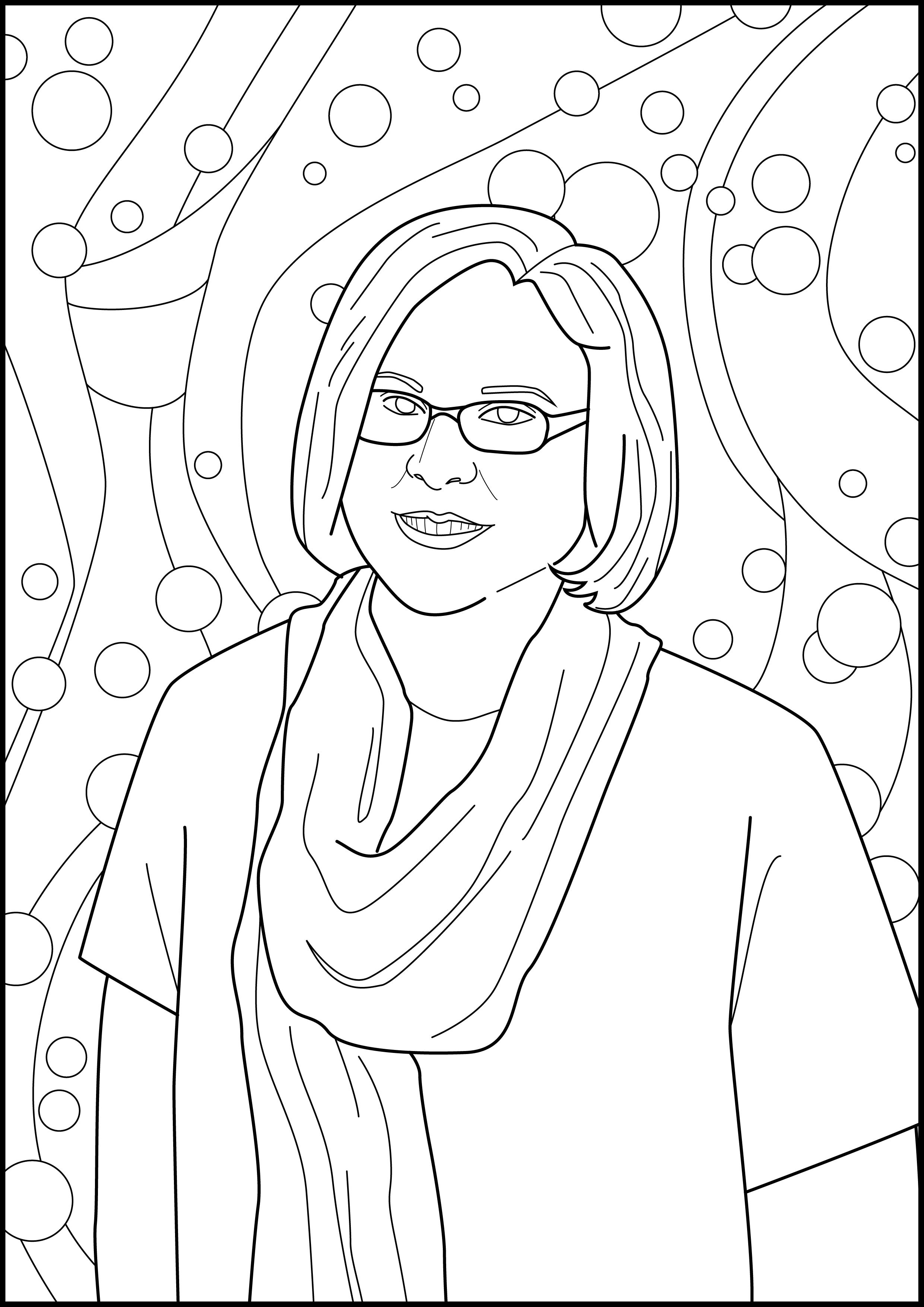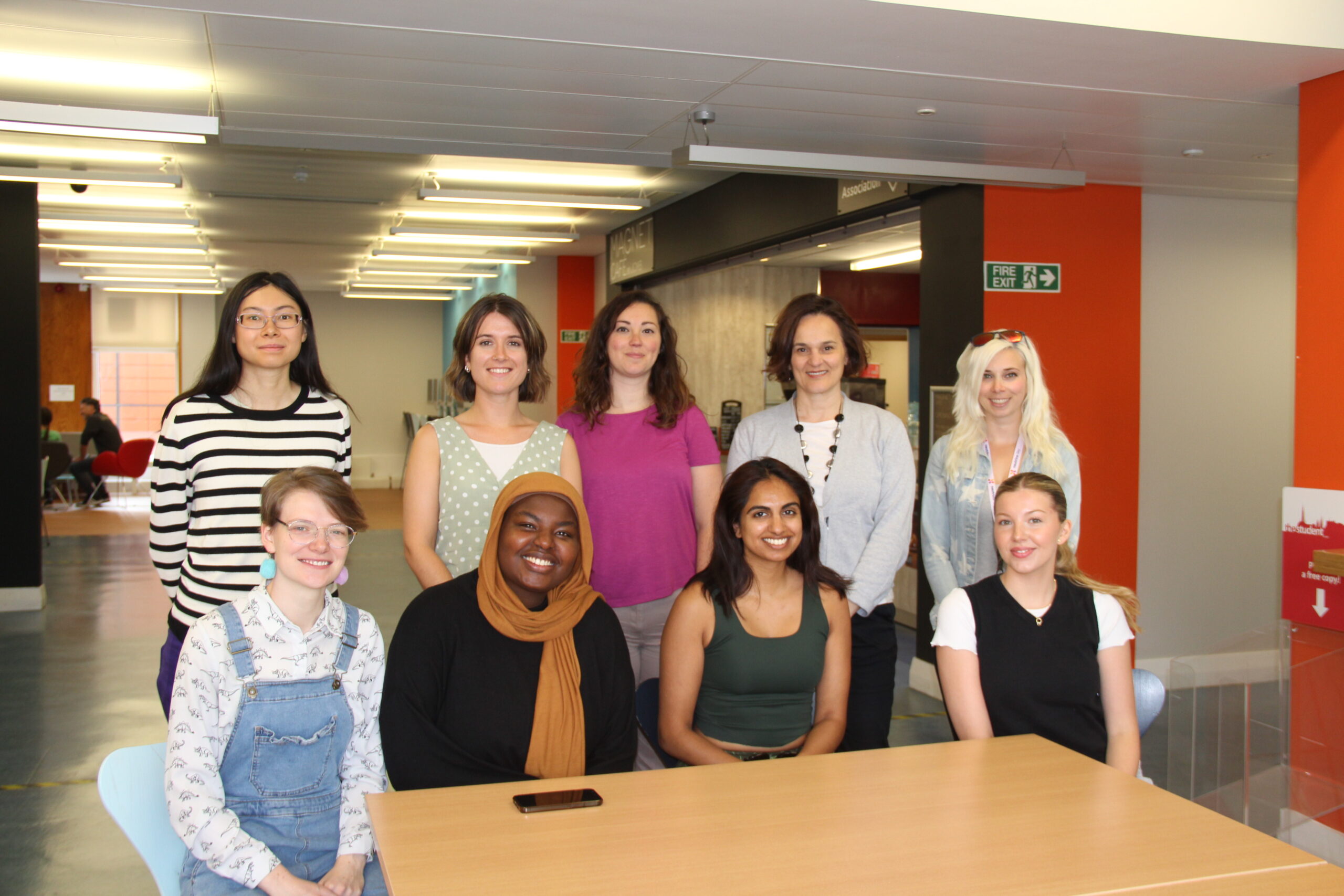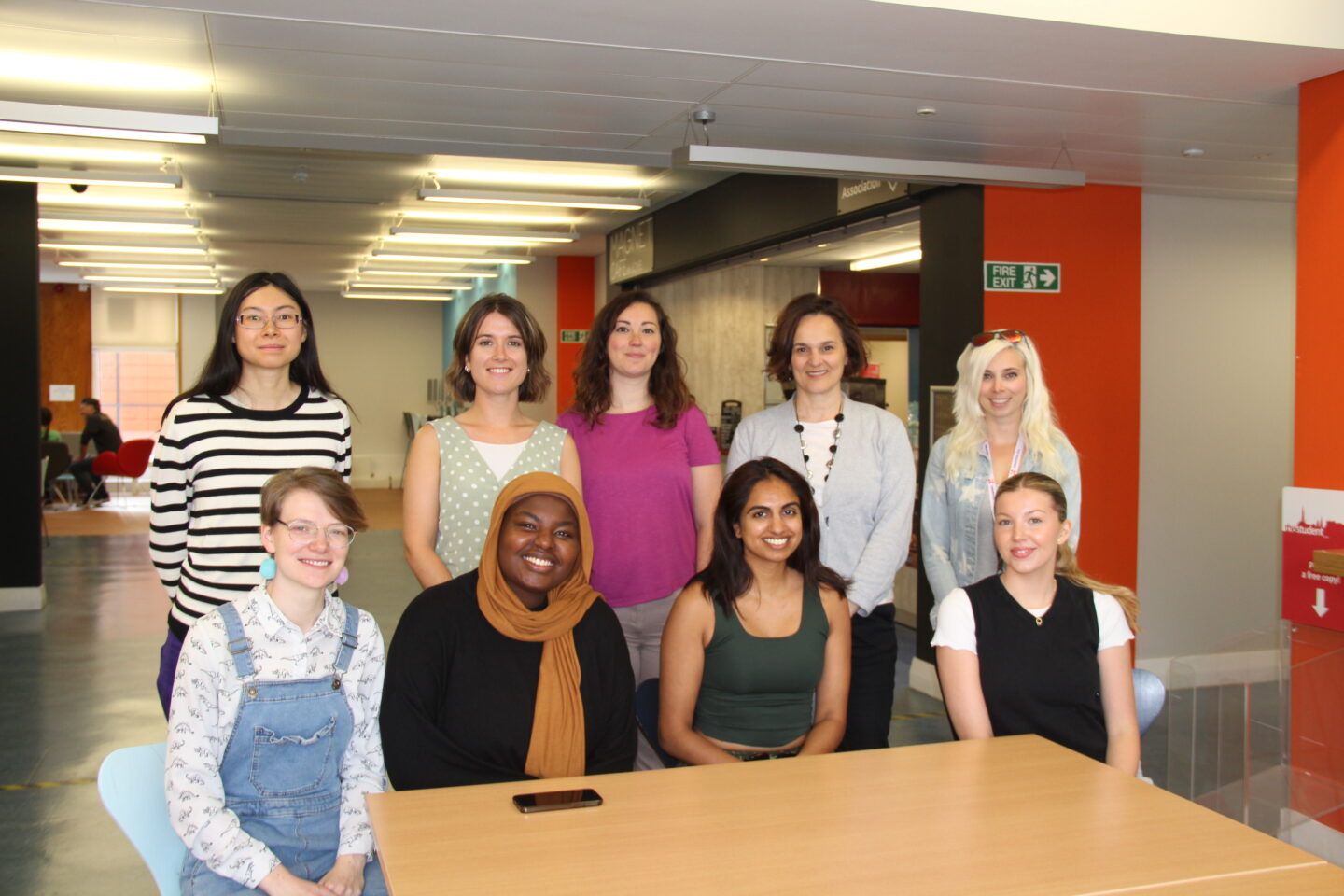Today, I had the privilege of sitting down with ten exceptional women in the field of Physics at the University of Edinburgh. During our conversation, we discussed their experiences, research, and remarkable achievements. I want to extend a special thanks to Jean-Christophe Denis, who organised this meeting.

A Chat With Professor MacPhee
Firstly, I had the pleasure of speaking with Cait MacPhee, an accomplished professor in biological physics and experimental molecular biophysics. She is also the co-director of the National Biofilms Innovation Centre. MacPhee, who became the first female professor in the School of Physics at Edinburgh, shared her inspiring journey in STEM:
“There is no standard journey. You’ll hear different stories from different people… I initially pursued biology but found it challenging. Eventually, I decided to switch to physics for my Ph.D. as it made more sense to me, and I enjoy working with numbers.”
Having been at the University of Edinburgh for 18 years, MacPhee has witnessed significant changes within the department during her tenure.
Reflecting on the past, MacPhee discussed the absence of maternity policies when she worked at a previous institution and was pregnant with her first child. The department was uncertain about how to address this situation, leading to chaotic circumstances. However, as senior male staff members have began prioritising childcare responsibilities, policies and procedures have been put in place to support out-of-work responsibilities, including childcare. MacPhee acknowledged the progress made, recounting instances of being the only woman in the room or being overlooked by male peers, while emphasising the significant improvements that have taken place.
In our conversation, I asked MacPhee about the policies and infrastructure required to encourage women to enter and thrive in STEM fields. She emphasised that real change can be achieved by starting at the grassroots level:
“When children are turned off from pursuing sciences, it often happens at an early age, even before they reach secondary school. Thus, a lot of work needs to be done in primary schools, which is a particular passion of mine.”
MacPhee noted that girls often receive subconscious messaging in schools that leads to repetitive thought patterns discouraging them from pursuing STEM. With a majority of teachers in arts and humanities, young girls can naturally gravitate towards the arts without proper exposure to sciences in the curriculum. She believes that schools need to empower and train their staff to integrate STEM more closely and equally into their curriculum. This involves empowering teachers to deliver science programs themselves, addressing the lack of confidence often observed.
Despite the challenges and obstacles encountered, MacPhee emphasised her deep love for her work:
“I genuinely enjoy what I do. I’m amazed that they pay me to do this job. The element of discovery is exhilarating. When you know something that nobody else in the world knows and have figured it out, there’s nothing quite like that feeling.”
One of MacPhee’s “lightbulb” moments came during her extensive studies of biofilms, which are slimy nests of organisms found in various environments. Studying their water-repellent mechanisms led her to make ground-breaking discoveries previously unknown in biology.
A Chat with students and professors in physics
Our conversation expanded as nine other exceptional women in physics joined us. The array of talent, dedication, and passion they brought to the discussion was truly remarkable. It was an absolute delight to explore their research and experiences and brainstorm ideas on how to encourage women in STEM across the university.

Here is an introduction to the remarkable women who participated in the interview (from left to right, top to bottom):
- Mylaine Holin: Ph.D. student studying extreme conditions
- Hannah Shuttleworth: Ph.D. student in physics researching condensed matter and complex systems
- Rosa Santomartino: Leverhulme Early Career Fellow researching astrobiology
- Marialuisa Aliotta: Professor of experimental nuclear astrophysics
- Sally Shaw: Lecturer in experimental particle physics
- Orianna Ball: Ph.D. student studying extreme conditions
- Estifa’a Zaid: Ph.D. student studying particle and nuclear physics
- Nisha Grewal: Ph.D. student in the School of Physics and Astronomy
- Holly Bridge: Ph.D. student studying soft matter physics
Why did you choose to pursue STEM?
To gain insights into their motivations, I asked the group about their journeys into STEM. Marialuisa Aliotta shared that she initially aspired to be a ballerina but her brother’s scientific inclinations inspired her to pursue physics and become an academic. Rosa, driven by her childhood dream of becoming an astronaut, embarked on a postdoctoral research journey in astrobiology at the University of Edinburgh. Sally, fascinated by space from a young age, found her perfect blend of astrophysics and particle physics in studying dark matter. Holly’s passion for math led her to begin her Ph.D. in physics, focusing on modelling individual-based simulations for bacteria and wastewater treatment. Hannah conducts experimental high-pressure experiments, simulating conditions akin to the centre of the Earth using diamond-tipped tools. Mylaine’s fascination with the universe’s scale and gas giant planets propelled her to study physics. Orianna, inspired by enthusiastic teachers during her schooling and her sister, conducts research on extreme conditions using the diamond anvil technique. Nisha’s affinity for mathematics led her to pursue astrophysics as a Ph.D. student to deepen her understanding of the world. Estifa’a, driven by her early enjoyment of mathematics, conducts particle physics experiments.
When discussing role models, Rosa mentioned having an astronaut living in her building during her childhood, which left an indelible impression. Others agreed that looking up to researchers and teachers played a vital role in encouraging their pursuit of STEM.
Have you encountered any obstacles?
Our conversation also touched upon the experiences and obstacles faced by these remarkable women in their respective fields. Marialuisa recalled joining the department in 2001 as the sole female staff member in her department at the time:
“When I came to Edinburgh in 2001, I was the only female member of staff for the first six years. It felt somewhat lonely, and I struggled to engage with my all-male academic counterparts. However, conditions have significantly improved since then, although challenges still persist.”
The group concurred that having mentors and role models is instrumental in achieving success as women in their fields. Nisha emphasized the importance of seeing women in positions of influence and demonstrating that it is possible. Supportive mentors played a vital role in Estifa’a’s journey, instilling confidence and fostering a belief in her capabilities.
The women highlighted community programs like Soapbox Science and the film “Picture A Scientist” as initiatives that encourage and showcase women in STEM fields.
What advice do you give to the next generation of women in STEM?
When asked for advice for young women pursuing STEM, Sally advised ignoring anyone who suggests they are just filling a quota, emphasising that they deserve their place. Hannah stressed the importance of not comparing oneself to others, as she had initially viewed certain male counterparts as an elite group. Rosa emphasised that perfection should not be the end goal, encouraging young women to find supportive mentors and acknowledging that imperfection is acceptable.
The women also underscored the significance of forming friendships with fellow women in STEM. Holly noted the positive impact that conversations with peers experiencing similar situations can have, encouraging those who may be shy to push themselves and seek out these connections.
Progress and Persistence
In conclusion, the experiences, insights, and achievements shared by these incredible women at the University of Edinburgh highlight the progress made and the evolving landscape for women in STEM.



Leave a Reply